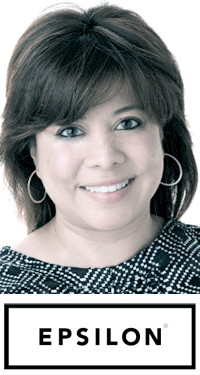Marketing to affluent Latinos [INSIGHT]
August 6, 2016
 By Brenda Storch, Director, Social Media, Epsilon
By Brenda Storch, Director, Social Media, Epsilon
In part one of this two-part series, I addressed the buying power of Latinos and the different segments of this evolving market. I also debunked the myth that Latinos are of meager means. Today, let’s address two more myths about Latinos and their shopping preferences.
Myth #2 Latinos lack a desire for high-end brands or experiences
Who do you think is a top consumer of brands like Dolce Gabbana, Dior or Gucci?
A study by Epsilon and the Luxury Institute, shows that “luxury brands may miss huge opportunities by not understanding who their best customers are.”Making a case for the fact that, “when brands do not know their customers, they cannot interact with them in a way that is relevant, personal, and meaningful. In turn, they lose the ability to keep their best customers and gain potential customers who are spending with their competition.” The argument is further supported by sobering numbers: “50 percent of luxury brands lose half of their top customers every year.”
Dolce Gabbana or Dolce… de Leche
Studies show a few interesting facts about the consumption habits of the growing affluent Latino segment when it comes to high-end purchases:
- Affluent Latinos own 11 percent more luxury brands than their non-Latino counterparts and over-index in ownership for almost every luxury brand according to Mintel.
- According to Idem, beyond products, when it comes to an upscale activity, Latinos are more likely than their non-Latino counterparts to “…have stayed overnight at a premium or luxury hotel, attended a fundraiser, flown internationally first class, or taken a premium cruise.”
- Latinos are also more likely to spend on a gym membership, attend sporting events, sign-up for streaming-video subscriptions and go on vacation.
- 23 percent of affluent Latinos take five or more vacations per year as compared to only 9 percent for non-Latinos, and they make more international trips than their counterparts, spending more on their trips.
Brands that noticed this trend early on, have already reaped the benefits:
An article in London’s Financial Times highlights stories of success attributed to tapping into this booming market via interviews with different luxury brand marketing executives, including Robert Polet, president and chief executive of Gucci Group. Mr. Polet is quoted as saying that Latinos are: “A big part of our exponential growth in the U.S., especially in the southern California and southern Florida areas, is driven by these demographics, which still present a huge potential.”
Whether this status-affirming behavior is heightened by Latino’s social dynamics in their countries of origin, or fueled by the desire to embody the success that honors their own or their parents’ immigrant experience, one point is clear: this young vibrant, loyal community shops more, lives large, and can certainly afford to do it.
Myth #3 Forget Spanish when speaking to affluent latinos
Have you found that the voice selling you a fancy car on TV has a very attractive foreign accent? For a long time, messages in languages different than the one locally spoken, have played a part in the strategy of marketing experts to make their products feel exclusive, sexy and worth the price tag.
In Mexico and other countries in Latin America, for example, some brands create their ads in English. The messages become a nod to exclusivity and at the same time, a targeting tool, as they are only understood by those who have been able to access and afford bilingual education.
Language is fascinating, it is part of one’s identity and is intricately connected to emotions. As the Latino community in the U.S. evolves and matures, brands’ approach to this cultural code is quickly becoming a more delicate balance of art and science. While it is true that affluent Latinos are most likely young, U.S. born, bicultural and bilingual, luxury brands should not assume that they should engage with them only in English.
For example, in social media, the channel of choice for mobile-first, digitally savvy Latinos, 90 percent of our most successful posts for a luxury spirits brand targeting millennial Latinos are those that strategically mix English with Spanish compared to those in English or Spanish alone. Cautiously used throughout, words in Spanish within English messaging, were aimed at bringing out emotions while making an elegant nod to culture.
Social media fans read the content like shorthand to their hearts. Then they shared it.
In a nutshell, Affluent Latino millennials might be millennial, but they are Latino first.
About Epsilon
Epsilon is a global leader in creating connections between people and brands. An all-encompassing global marketing company, we harness the power of rich data, groundbreaking technologies, engaging creative and transformative ideas to get the results our clients require. Recognized by Ad Age as the #1 World’s Largest CRM/Direct Marketing Network, #1 Largest U.S. Agency from All Disciplines and #1 Largest U.S. Mobile Marketing Agency, Epsilon employs over 7,000 associates in 70 offices worldwide. Epsilon is an Alliance Data company. For more information, visit www.epsilon.com, follow us on Twitter @EpsilonMktg or call 1.800.309.0505.





























